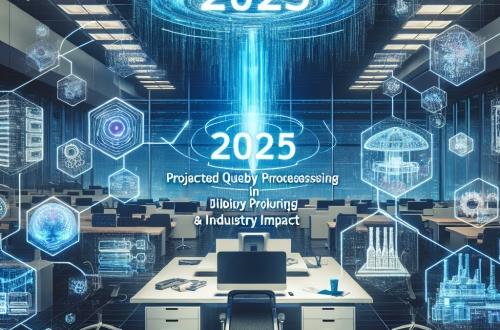AI-Powered Threat Prioritization in Vulnerability Management Systems
Summary: Modern vulnerability management faces overwhelming alert volumes that human teams can’t effectively prioritize. AI-driven risk scoring systems now analyze threat intelligence, asset context, and exploit trends to automate remediation workflows. This article details how to implement ensemble ML models that combine CVSS data with business context scoring, including technical integration patterns with SIEM systems and configuration guidance for reducing false positives. Enterprise deployments require special consideration for model drift in dynamic network environments.
What This Means for You:
Practical implication: Security teams can reduce mean time to remediation by 60-80% when implementing context-aware AI prioritization, but require customized risk scoring frameworks aligned to organizational assets.
Implementation challenge: Model accuracy depends on continuous feeds of updated CVE data, asset inventories, and internal exploit attempts – build automated pipelines from SIEM/XDR platforms before deployment.
Business impact: Prioritization AI delivers strongest ROI when integrated with ticketing systems to auto-create Jira/ServiceNow cases, with measurable reductions in critical vulnerability dwell time.
Future outlook: Emerging adversarial AI techniques now weaponize false vulnerability signals – implement checksum verification of CVE feeds and human review layers for critical infrastructure systems.
The Alert Fatigue Crisis in Modern Security Operations
Enterprise vulnerability scanners now generate thousands of daily alerts while advanced persistent threats exploit the 7% of vulnerabilities that actually matter. Traditional CVSS scoring fails to account for organizational context like internet-facing assets, sensitive data locations, or active exploit campaigns – forcing security teams to waste cycles on irrelevant patches. AI-powered threat prioritization solves this through multidimensional risk analysis that weights technical severity against real-world business impact.
Understanding the Core Technical Challenge
Effective AI prioritization requires processing six intersecting data dimensions: NVD base scores, EPSS exploit predictability, internal exposure levels, compensating controls, threat actor TTP alignment, and business criticality. Most failed implementations stem from incomplete data integration – for example, models trained only on public CVE feeds will miss internal network topography that determines actual risk. The technical sweet spot combines structured ML (Random Forest classifiers for known vulnerabilities) with graph neural networks analyzing unknown threat patterns.
Technical Implementation and Process
Build a three-stage processing pipeline: 1) Data unification layer ingesting Tenable/Nessus scans, CMDB records, EDR telemetry, and threat intel feeds 2) Hybrid scoring model applying weighted algorithms to different risk dimensions 3) Decision engine producing SOAR playbooks. Critical integration points include SIEM APIs for historical attack patterns, Service Graph for asset relationships, and workflow tools for automated ticket creation. Containerize models using ONNX runtime for consistency across cloud/on-prem deployments.
Specific Implementation Issues and Solutions
Data freshness latency: CVE scoring becomes stale within 72 hours. Solution: Implement NVD webhook subscriptions with Snowpipe streaming into Snowflake staging tables.
False positive reduction: Overweighting exploit PoC availability causes alert storms. Solution: Apply temporal decay algorithms to older vulnerabilities and require multi-factor exploit verification.
Performance at scale: Unoptimized graph traversals bottleneck processing. Solution: Pre-compute asset relationship matrices overnight and use Neo4j GDS library for real-time queries.
Best Practices for Deployment
- Start with internet-facing assets before internal systems to demonstrate quick wins
- Build explainability reports showing scoring breakdowns for audit compliance
- Implement drift detection comparing model scores to actual exploitation rates
- Use hardware security modules for model integrity verification in regulated industries
Conclusion
AI-driven vulnerability prioritization delivers maximum impact when tightly coupled with organizational risk frameworks and remediation workflows. Focus initial deployments on high-value assets with measurable MTTR improvement targets, then expand model sophistication through iterative feedback loops with security analysts. Remember that AI provides decision support – final human validation remains critical for tier-0 systems.
People Also Ask About:
How accurate are AI vulnerability scoring models?
Leading implementations achieve 85-92% precision in identifying vulnerabilities subsequently exploited in the wild, but require quarterly retraining on MITRE ATT&CK pattern updates and verified breach data.
What’s the minimum data required to start?
Begin with asset inventory, authenticated scan results, and 12 months of resolved ticket data. Augment with free CVE feeds before investing in commercial threat intelligence.
Can this replace traditional vulnerability management?
No – AI prioritization enhances rather than replaces scanning and patching. It optimizes which vulnerabilities get attention first within existing workflows.
How to measure implementation success?
Track reduction in critical vulnerability dwell time and percentage of remediated vulnerabilities that were actually exploitable in your environment.
Expert Opinion
Forward-thinking organizations now treat vulnerability management as a predictive rather than reactive function. The most effective implementations maintain separate models for development (pre-production risk prediction) and operations (real-time threat response), with a feedback loop between teams. Budget for ongoing model maintenance – cybersecurity AI requires 40% more tuning effort than typical ML applications due to adversary adaptation.
Extra Information
- Open source reference architecture for integrating CVSS, EPSS and internal context scoring
- FIRST EPSS documentation on exploit prediction scoring system data feeds
- NIST CSF guidelines mapping AI vulnerability tools to security frameworks
Related Key Terms
- context-aware vulnerability scoring algorithms
- integrating EPSS with SIEM systems
- AI for CVSS prioritization tuning
- automated vulnerability ticket creation workflows
- machine learning model drift detection for cybersecurity
Check out our AI Model Comparison Tool here: AI Model Comparison Tool
*Featured image generated by Dall-E 3





